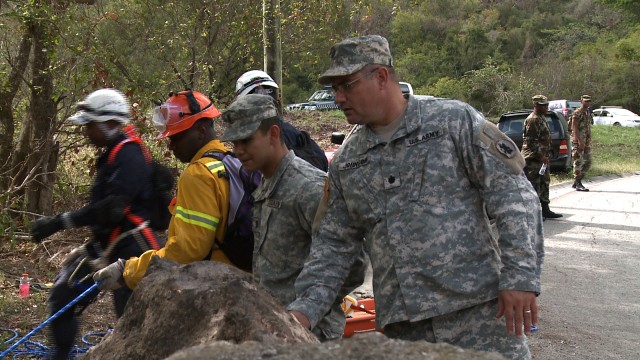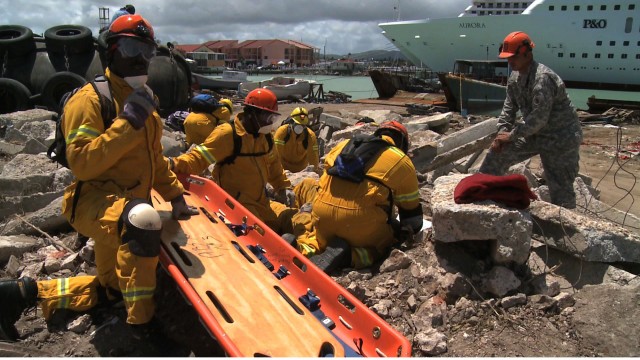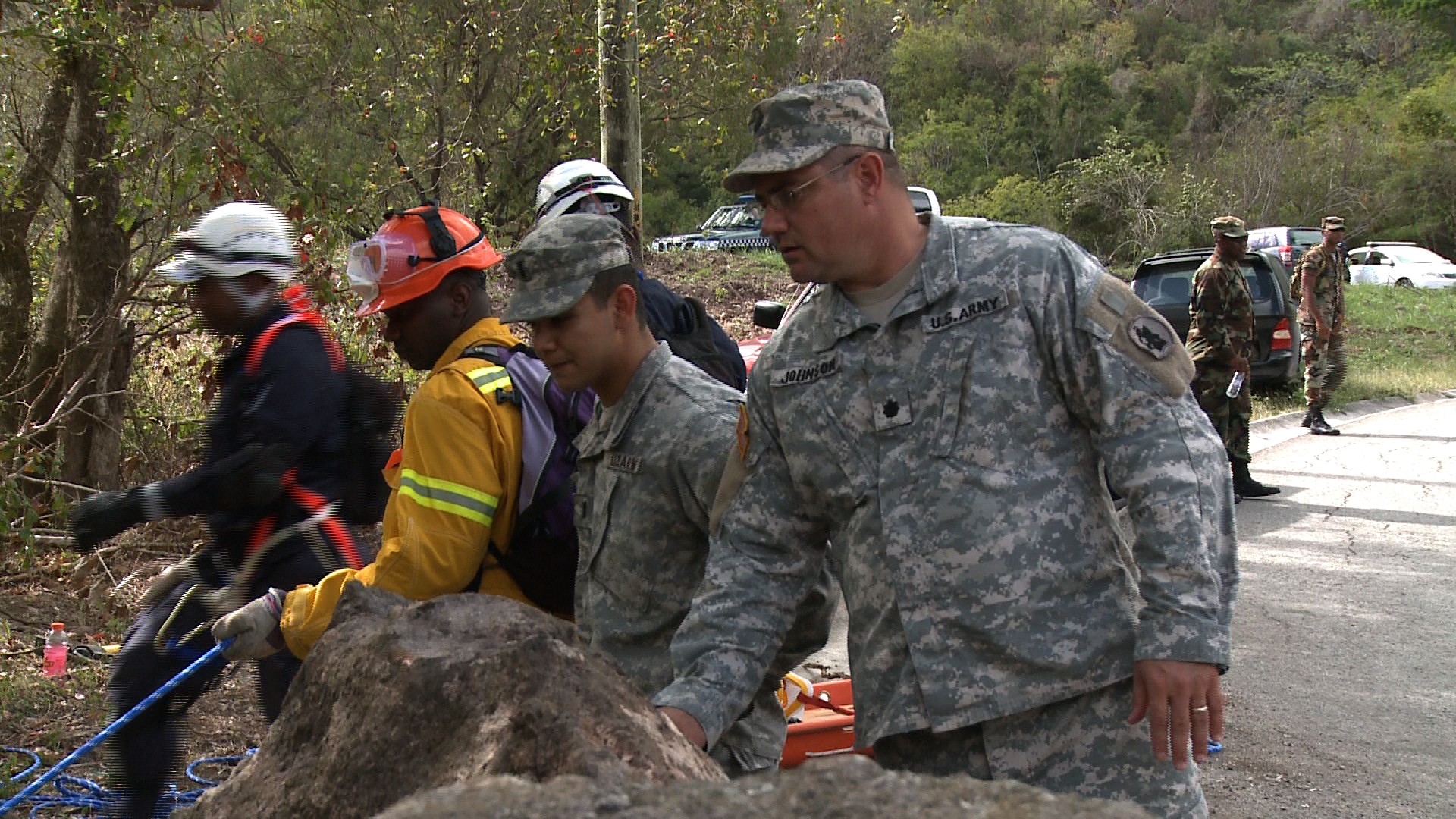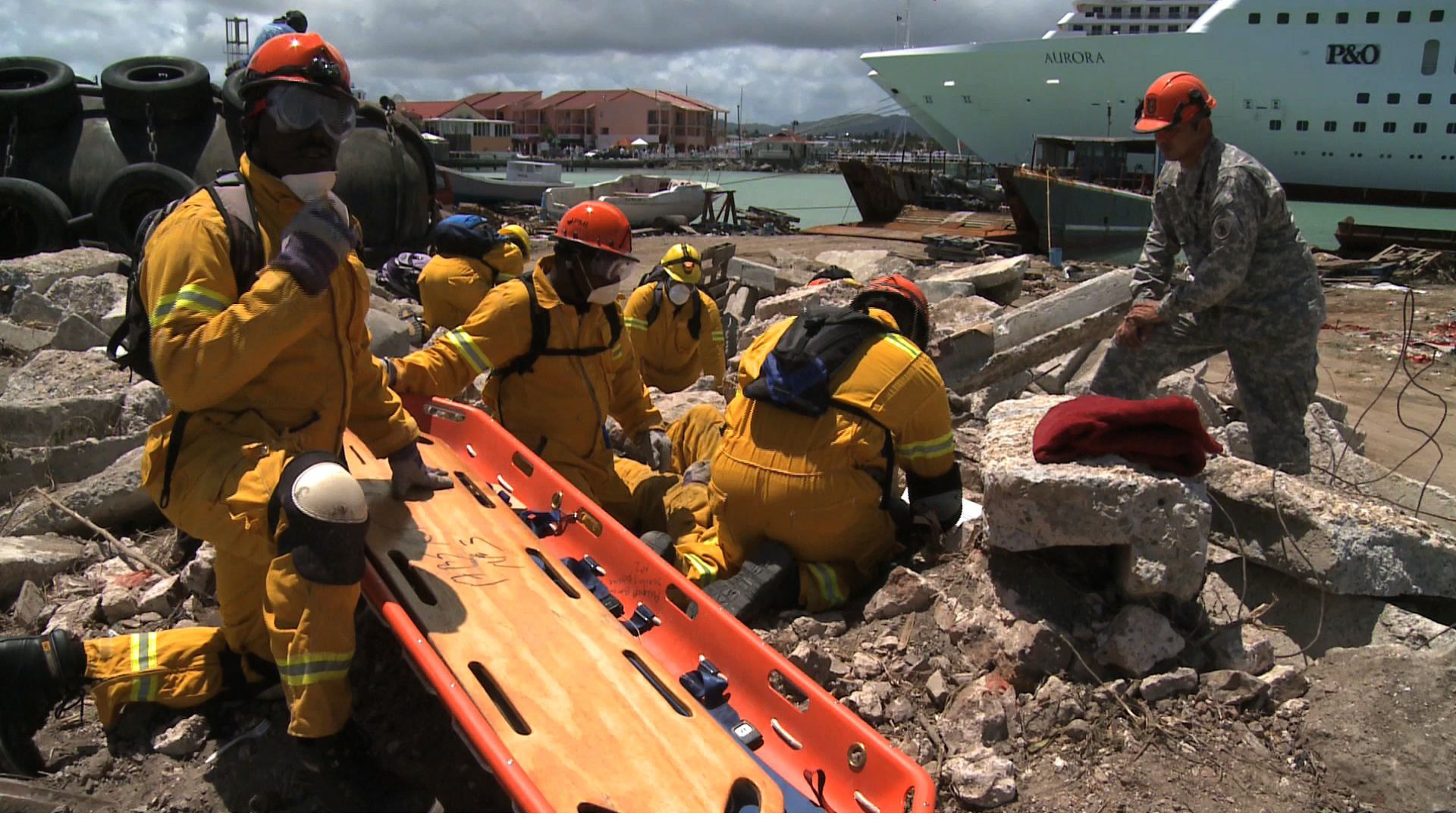ANTIGUA -- Humble homes collapsed in the wake of another tremor, the likes of which have rarely been felt here in over thirty years. Hospitals are flooded with the desperate, the pillars of society suddenly torn away by nature. The disaster was as unforeseen as its effects are reversible.
Such was the scenario that played out over the course of the last two weeks in April in our neighborhood to the south called Central America and the Caribbean.
Army South, ever present as the United States' land component service of choice, served as the executive agency for FAHUM 09, an acronym derived from the Spanish translation for the Allied Force Humanitarian training exercise. Sgt. 1st Class Roger Garcia, the Humanitarian Assistance and Disaster Relief Operations NCO was the operation's NCOIC.
On April 22, he drove by a tiny white bus loaded with uniformed school children on a narrow street.
He had to concentrate on driving to the left in Antigua (pronounced An Teeg Uh).
Everything was the reverse of his home in San Antonio. If there was a speed limit, no one was obeying it. He was on a mission that he hoped will save lives if need be.
He navigated a farm tractor, animals, pedestrians and potholes on his way to a training site in what he called his exercise.
"We beef up their scenario," Garcia said of this, his second FAHUM in two years. "I wish we were more a part of the actual search and rescue but it seems like the civilian relief agencies prefer military forces to stay out. That's the way it was in some places during Katrina," he said referring to the hurricane that struck New Orleans.
At 34 he laughingly described his responsibilities for the exercise as that of an enforcer. His yoke includes ensuring that everything that had been planned at the headquarters in Fort Sam Houston, Texas, and everything directed by Southern Command, Army South's higher headquarters in Miami, goes as scheduled.
As he drove that morning, evaluators from the Caribbean Disaster Emergency Response Agency (CDERA) were fanned out across the island country observing native and partner nation first responders react to the effects of a mock earthquake.
If it had been an actual emergency, things would have been going, pretty much, according to plan. The request for assistance to the U.S. Ambassador in Barbados was, so far, unnecessary because in this scenario, CDERA and the Antiguan National Office of Disaster Services (NODS) had things under control.
Were that request to come, the Army South Rapid Deployment Command and Control (RDC2) center was already on hand in Antigua and practicing. FAHUM has given the command an opportunity to train with concepts and technology that it would need as a deployed headquarters for any number of scenarios.
"It seems like this exercise gets bigger every year, Garcia said. Every day he and his cohorts at Army South's command center reported-in via video teleconference to SOUTHCOM and the Army South Main Command Post back at Fort Sam Houston using what Spc. Patrick Jacobs of the 56th Signal Battalion (Forward) called an "RRK Package." Jacobs, 26, from Plano, Texas, was there as one of about 14 RDC2 members to proof newly fielded technology.
Planning for the exercise had begun in earnest back in October and was going well overall considering the complexity and a compressed planning cycle, said Garcia before he entered the NODS.
He checked the meal plan for the operations' hundreds of participants and then made his way to the Emergency Operations Center where Antiguans were engaged in disaster relief operations.
Garcia pointed out the EOC director, a man completely absorbed in managing the latest crisis derived by Army South planners back in Texas. He moved from station to station tracking progress on a dry erase board labeled "Disaster Assessment Summary." There's a sense of distress-less urgency at computer work stations where government representatives hover and confer.
At the back of the room, Garcia conferred with the senior evaluator from CDERA as both men watch a video from SAR training earlier in FAHUM. Then Garcia decides where he needs to go in order to check training.
A quick drive through Saint Johns, the capitol of Antigua, ended in the shadow of a luxury cruise ship. There, in a very real pile of broken concrete and garbage lay four role playing "victims" crying in agony. Help had not yet arrived. Clive Lorde, a consultant with the United States Foreign Disaster Relief Agency, evaluated training. His being here was the direct result of Sgt. 1st Class Garcia and Army South.
"A lot of countries do not have the organization or funds necessary to do this," said Lorde crediting Army South. He went on to describe how, with each FAHUM, Caribbean countries gained a cadre of SAR skilled first responders and improved capacity to operate independently. He reflected on tragedies from the region's past where SAR skills would have helped.
Handheld radios crackled with information passing to command centers and a helmeted rescuer called out to the entrapped. Moments later, those "victims" who'd survived were ushered to triage sites and were, at least in theory, on their way to a hospital. Reflecting on the day's action, Garcia said "I try to alleviate the headaches of my officer in charge, Lt. Col. Ted Johnson.
"Sometimes you want to jump in and do it for them but you shouldn't, said Johnson, 43, of Bulverde, Texas. Johnson is a member of the G10 staff at Army South and is the officer in charge for FAHUM. "This is technical stuff, very tough," he says still sweating from an ascent after viewing a crashed vehicle and another "victim" rescuers were trying to save.
"We approached this operation from the standpoint of asking our partner nations how we, Army South, can help them." Johnson said that Army South had spent approximately $1.8 million on FAHUM but it is worth it if CDERA emerges better prepared for their search and rescue mission.
"So, in this exercise, we have two regions, four disasters, very complex; but we're making it happen and I feel it's a great success," Johnson said.




Social Sharing